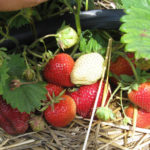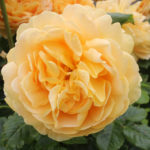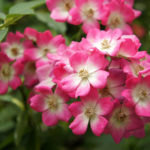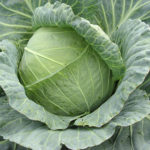Thuja western Sunkist
In landscape design, conifers are at the peak of their popularity today. And this is not surprising, because these plants are mostly unpretentious, resistant to adverse weather conditions, diseases and, most importantly, have a spectacular appearance. Many people like the variety thuja Sunkist (Thuja occidentalis Sunkist). Perhaps, having got to know him better, you also want to see him in your garden.
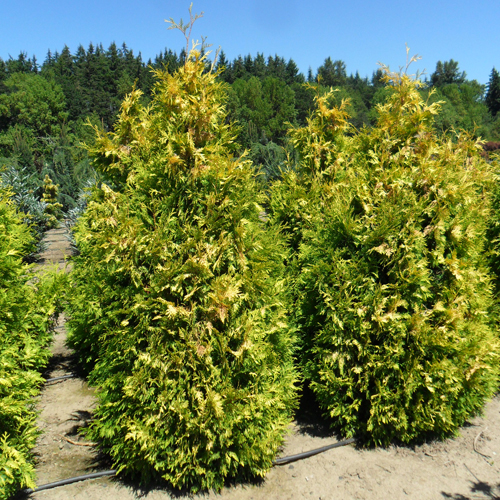
History of creation and description of the variety
This is one of the most valuable varieties of western thuja. It is an improved form of the Lutea variety. Our heroine is a coniferous tree that reaches a height of 2-5 meters at the age of 10. Can also be cultivated as a shrub. The plant has a fairly even crown in the form of a cone, formed by vertically arranged, densely branched and slightly twisted branches covered with bright, golden yellow, scaly needles. This shade is typical for young "needles". It brightens when exposed to sunlight and is replaced by green tones in the shade. In the cold season, the needles of the culture acquire a bronze color. The bark covering the branches of the tree is slightly flaking and may be greyish brown or reddish.
This variety is characterized by slow growth. Over the course of a year, the tree gains only 5 cm in height and the same in width. It is an incredibly decorative culture that retains its appeal all year round. It is highly frost-resistant, but vulnerable to sunburn in winter and early spring. The golden beauty has good immunity. Ephedra is practically not susceptible to fungal and bacterial diseases.
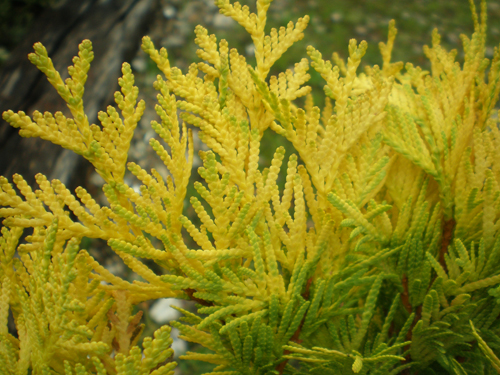
Features of agricultural technology
Sankist is a shade-tolerant plant, but it is better to place it in partial shade or in a sun-drenched area, since in the shade the thuja needles lose their density and shine. Take care to protect the evergreen shrub from cold drafts. The coniferous soil needs fertile, moderately moist, with good air and water permeability and pH in the range of 4.5-6 units. The best soil option for a plant is nutritious loam. Planting an evergreen culture begins with digging a hole to a depth of 60-80 cm. Then a soil mixture is prepared by combining leafy soil, sand and peat in a 2: 1: 1 ratio. Nitrogen and mineral fertilizers are introduced into the hole, soil is poured on top. But first you need to lay a layer of drainage material 10 cm thick. The seedling is deepened into the soil so that the root collar is not lower and not higher than the ground level. Shrubs of this variety are planted at a distance of 0.5-0.6 meters from each other.
Watering is very important in plant care. They should be produced regularly, since an evergreen tree does not tolerate drought: it thins the needles, and the culture acquires cones. Both have a negative effect on the decorative effect of the crown. It is necessary to moisten the soil under the bushes at least 1 time per week. 1 bucket of soft water at room temperature is poured under an adult plant. In a dry, sultry summer, the Sankist is responsive to sprinkling. Obligatory procedures are loosening and mulching the soil under the thuja. The first helps to ensure normal access of oxygen to the plant's root system, and the second allows you to keep a sufficient amount of moisture in the soil for a long period. You need to loosen the soil under the tree shallowly. Chopped pine bark or peat is suitable for the role of mulch.
In the spring, the coniferous plant is fed using a special fertilizer intended for evergreen crops. In summer, phosphorus-potassium concentrate is suitable for him.At the same time of the year, the tree needs pruning, which consists in removing dry, damaged and not overwintered shoots. If necessary, carry out a formative haircut of the ephedra, shortening too long branches. For the winter, young specimens are covered by wrapping the crown with burlap. This will prevent the harmful effects of frost and sunburn on thuja.
Use cases
Landscape designers use Sankist, first of all, to decorate hedges. The golden-yellow beauty looks beautiful on the lawn, standing out with its cheerful color against the emerald green background of clipped grass. It is also good in compositions with other conifers and shrubs, in rockeries and rock gardens. Tuyu is also combined with decorative flowering perennials with buds of both pastel and bright colors.
